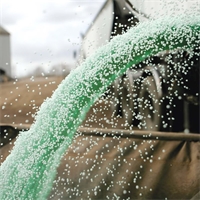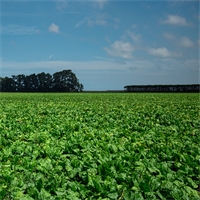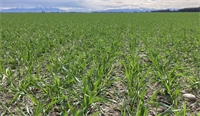Words supplied by Craig Rodgers, Group Manager On-Farm Sales
Autumn is finally upon us after a summer that took a while to heat up, bringing with it some late dry periods over the past two months. This late temperature reduced moisture reserves causing some stress on pasture growth with the soil temperatures remaining high. Apart from a couple of drier spells in the weather, harvest took some time to gather momentum, as early February weather brought cooler nights and mornings with minimal harvest completed on these days.
Cultivation and drilling of pasture and autumn sown crops is underway with the long-term forecast through March looking good for regular rainfall, and if sunshine hours and soil temperature remain positive these crops should establish well.
Pasture
The warmer weather through the summer has seen pastures perform well compared to the previous couple of summers. Soil temperatures have remained at optimal levels resulting in consistent grass growth. There has been surplus of grass this summer which has enabled re-grassing programmes to continue throughout spring that won’t impact any of these surpluses. Older pastures have struggled on the extreme hot days and as they thin out, older types and weeds will return in the gaps. This is a good time of year to identify paddocks for your re-grassing programme and these decisions should be made around production at key times of year to suit your farm. Selection of cultivars is also important and while there can be a variation in pricing, the latest release of the Forage Value Index is a great guide to selecting the grass that will produce best when you need it to. Most new pastures will be looking good in the first couple of years, but persistence is where you get the greatest value. Cropping rotations need to be considered since some short-term grasses can produce some very good yields and give paddocks a break from crops. While most grasses are bred to produce good yields in suitable conditions, it has become obvious that not all grasses suit all farmers or the management style you may have on your farm. Establishment is also important and it is vital to ensure a good spray programme is in place to remove any competition prior to drilling and once the pasture has struck.
Cereals and grain
The harvesting of cereal crops is getting near the end and at this stage yields seem to be higher compared to previous years. Samples also have higher test weights and are visually better looking. Once again there is a wide range of screenings across samples, especially for barley. Grain prices are very static, and we may see a wide range of pricing across the samples with the quality being the deciding factor for buyers. As mentioned above, the demand from dairy farmers and other end users has been minimal due to feed surpluses. Again, we await results from some new varieties that entered the commercial market over the past year and while not all were available on the open market, FAR will be updating results from trials to see if they can consistently perform over a period of time.
Grass seed & clover
While most harvested crops are currently being dressed there has been some very good grass seed yields across a variety of areas. Early confirmed test results are encouraging and there should be plenty of availability across proprietary and common lines. Pricing has held up over the latter part of last year, however demand has quietened down over the last couple of months and the Nui price in the market has dropped significantly over this time.
The clover harvest is has only just begun and most struggled with too much growth and bulk through the early summer. The hotter weather in January and February has helped crops turn quicker than expected and if this weather continues through March, we should get the bulk of it harvested. It is unknown how the weather conditions have affected clover crops and we will only know once dressing is completed. The commodity clover price has been very dormant through the past year with very little demand.
Fodder beet
The warm soil temperatures and hot weather over the summer season has fodder beet crops looking reasonably good. The spring hail storms might have caused some unknown long-term effects, but recent visuals of the crops are looking like they have recovered well and relatively on track to be similar to previous seasons. Once again, we are starting to see some yellowing with the bottom leaves starting to drop off and some drooping on the extremely hot days. Coming in to Autumn the weather brings cooler and shorter days but this should not impact the bulbs as they will still develop and grow.
While it is too early to estimate yields it will be interesting to see how the earlier grazed crops perform. Some farmers are looking to transition and feed as early as April and we may see some variation across paddocks from commencement to the end of grazing as the crop continues to grow in April and May. Performance of varieties remains a good talking point and over the coming months we will hear the usual yield estimations, however the best way to get an accurate calculation of yield is to use an independent feed assessor even if the crop is for your own use. This will help the transitioning process and welfare of animals in the early grazing stages.
For more support, talk to your Ruralco Representative.
Related

“Spring pasture needs both nitrogen and sulphur. A sulphur deficit limits nitrogen uptake, and ther...
Read More

With a significant growth over the last year as well as continually acting in the spirit of the Rura...
Read More

Enjoy this comforting salad on it's own or as a side to your favourite meat dish.
Read More

Autumn is on its way following a favourable summer, especially for cropping farmers who have been ab...
Read More

Sharkie and his Ruralco team are going into new territory via an innovative national campaign called...
Read More

Understanding nitrogen (N) levels in soil is important, as this nutrient is a key driver of growth a...
Read More